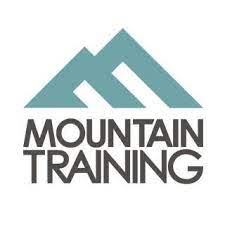Becoming a mountain leader can be amazingly fun, emotional and challenging. Leaning how to read the landscape, manage both adults and children in the hills can be rewarding. Here are my top 10 tips for your mountain leader assessment. Enjoy
1. Look like an experienced hiker
Once you’ve passed your Mountain Leader award, you’ll be responsible for guiding groups in various weather conditions and abilities. The assessment is to show that you can manage these tasks safely and professionally.
2. When you’re leading, take you time
When taking the lead, remember to engage with your group and assessor. If you can’t walk and talk comfortably, you’re pacing too fast. Take a five-minute break after an hour of walking, and a longer break after two. Snack occasionally and avoid heavy meals unless in a perfect spot on a lovely day.
The navigation aspect of your leg is important, so plan your route carefully and verify you’ve reached your point.
3. enjoy the view, look around
You’re doing this award because you enjoy the mountains and want to share it with others. Use the map wisely and soak up the features around you, as they will aid your navigation and remind you of your purpose. Often, you see people walking with their eyes buried in the map; assessors notice this, and it increases the chances of tripping over grass, much to everyone else’s amusement. Look at the way the landscape flows and use this to your advantage.
4. Read the ground through your feet
Is the ground doing what it should? Is it dropping to the right or going straight down? Experienced hill walkers and mountaineers are alert to this. Look at the map and consider the contour lines; what should the ground feel like underfoot? Is it a flat bog or a steep incline? Also, don’t hesitate to stop and reassess if something feels off.
5. Know what you’re talking about
From your five-minute specialist topic to which sweets are best in the cold, knowing what you’re talking about puts you in a stronger position than those who can’t distinguish between bog myrtle and a Cadbury’s Cream Egg. You don’t have to know everything, but ‘blagging it’ is a risky strategy that assessors will see through.
Make sure to read up and research a couple of topics, like geology, flora and fauna. Having good knowledge on these topics will increase your confidence throughout the assessment.
6. Make safe decisions
Whatever happens, when making decisions, think about safety. The saying ‘Danger never takes a day off’ applies to your assessment. This includes steep ground and emergency rope work. It also covers camp craft and group care. Show you understand the hazards and are making appropriate decisions. Become the ‘leader’ of the group. Manage the route. Spot any potential dangers. Have a plan to manage that danger.
7. Be well practiced and familiar with the skills in the syllabus
By the time your assessment arrives, you should be comfortable with all the skills of being a Mountain Leader. A practiced candidate views the assessment as a chance to showcase their abilities, rather than fearing it. During the consolidation period, they’ve discovered helpful tactics (like thumbing the map and packing efficiently) to use to their advantage.
Ultimately, it’s about projecting authority and knowledge to instil confidence in your group and impress assessors. While bribery isn’t effective, the occasional Jelly Baby can be appreciated!
8. Don’t faff and be confident
Avoid mishaps like tripping on the first day and ensure your gear is familiar and functional. An assessment is not the time to figure out new equipment.
When your team is ready, be efficient. Don’t keep others waiting while you search through your rucksack. A good leader is organized and focused on their team.
9. practice, practice, practice different map scales
On your assessment participants are expected to use different map scales that is not the usual 1:25000 map everyone uses. the last thing you want to do is to struggle on assessment in the middle of the mountains.
Also, before your assessment, you need to practice all the skills and techniques a mountain leader should know. For example, practice pacing on different terrains. Learn how to cope with wet and windy weather. Understand how to manage a group on steep ground.
10. Get out their and have fun!
Go out with either friends, family or other like minded people. find yourself a challenge, the Wainwrights in the Lake district is a good one to do while your exploring. similarly, Munro’s in Scotland is another good challenge.
Discover more from CJB Training and Adventures
Subscribe to get the latest posts sent to your email.






